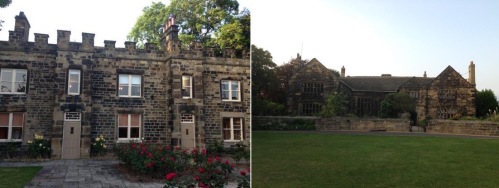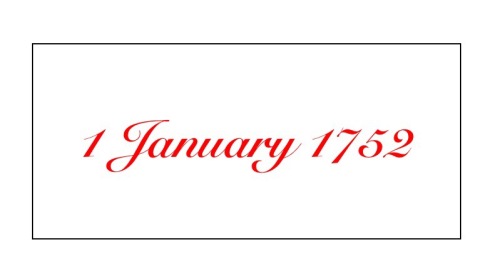It’s so easy to rely on online parish register searches or transcripts and indexes for family history. But by putting absolute faith in them you could be missing out on so much more. Hopefully this post illustrate why you should also invest time in looking at the register itself, or digitised images, and not simply place all your faith in the easier options.
Family History Society transcripts and indexes include the health warning to check against the original register, and it is sound advice. Even if they are accurate, information in the original register may by omitted due to space constraints or because they do not neatly fit in the templates. The same caveats also apply to search results from online providers of family history records.
I finally decided to write about the issue after recently going through baptisms in the Wakefield All Saints register for the 1750s and 1760s and comparing against online search results.

Here are some of the problems associated with not looking at the original registers, and benefits which may be gained from putting in the effort.
- Registers can be damaged making entries illegible. It may be just for the odd entry, but it could involve weeks, months or even years. There may be periods where the register does not survive, or was never kept. Whole pages may have been omitted during the digitisation process. This may be the reason why the entry you are seeking does not come up in a search or appear in an index, or why if it does there may be transcription errors. Without checking the actual register, or images, you may never know. And by not knowing you may end up with incorrect family history information or be missing out on work rounds like failing to check Bishop’s Transcripts (BT) copies.
- If you are relying on searches and indexes to find an entry, do not confine your to check the digitised or original parish register image for the entry concerned. Look at the surrounding ones too to get a feel for the register. These checks should include ensuring the parish or church matches against the one identified on the finding aid. This can be a particular issue if a parish church has associated chapelries. Birstall Parish for example had a Chapel of Ease, White Chapel, which had baptism and, eventually, burial rights. This subtle difference is not necessarily picked up if the register itself is not checked.
- Mistakes in transcribing and indexing. Recently I’ve seen the surname “Wright” mistakenly indexed as “Might“. Doing an online search for the surname, including any of the usual variants just won’t find it.
- Similarly Christian names can be totally wrong – James instead of Sam[ue]l is one that springs to mind in one of my family baptism searches. Without checking the register I would be led down the garden path for any future references to the child.
- On this theme, parish register amendments are not necessarily picked up in any searches. Two examples here. An 1816 baptism at Whitkirk. Ancestry has this indexed in searches as “William Illegitimate Pennington” son of Grace. This is wrong. The child was not illegitimate and the entry should be William Hill. There is a note at the bottom of the page of the baptism register stating it is erroneous and Grace was lawfully married to Francis Hill. Ancestry have not picked this up. And there is a similar theme for Wakefield All Saints when William son of William Jennings was baptised on 8 November 1764. The register has an annotation indicating three competent witnesses testified the child was actually called Thomas. Granted a search for Thomas Jennings on Ancestry.co.uk will fetch “William Jennings” in the results, but you need to drill down to find out the full details.
- The Wakefield All Saints register which promoted this search had several entries in the early 1760s for the birth of illegitimate children with the register noting the name of the father. Some indicate the child was “basely begot not declaring the father.” Others indicate the father in general terms like “a French Man” or “a French prisoner” (and those entries lead to a whole new set of questions). But others will name the putative father, including some with occupations (plenty soldiers) and some even giving his abode. The father is not shown in online searches, you need to view the entry. And if your ancestor was the father you possibly would not know without going through the register.
- Burials throw up the issue whereby some online searches give no surname for married women and children. Try Ancestry’s collection of West Yorkshire Church of England Burial Registers 1813-1985. In the early decades of this collection this surname omission is rife. Imagine the problem if your ancestor was an Ann, Mary or Elizabeth!
- Problems with dates. There are numerous examples of this. The wrong number for the day, month, or even the wrong year given. A particular issue is around the pre and post 1752 calendar change from Julian to Gregorian. Many parishes continued with the old style calendar way beyond 1752 in their registers, with the New Year still starting on 25 March. Without checking the parish register you may end up attributing a birth to the wrong year.
- Going through the registers yourself improves your transcription skills. You start to get your eye in for reading older documents, which only benefits your wider family history research.
- And finally by going through the register you start to get a feel for the community of your ancestors, the status of various parishioners, occupations in the locality, indications of disease outbreaks, maybe even weather updates and wider events. The Wakefield register is a perfect example of the snippets you can pick up. Between 1760 and 1764, using baptisms alone, there’s an abandoned child, the three children born to different women by a French man/French prisoner. On 13 August 1763 there is the baptism of Richard Brown, a black man from Carolina. And on 4 October 1764 “John Vernon a Black from Antiga [sic] ab[ou]t 22 y[ea]rs old.“
Published indexes and online family history database providers are fabulous finding aids and have opened up family history to a much wider audience. But they should be treated as that – finding aids. Using different sources may help overcome the issue. For example a Family History Society booklet may give different information to an Ancestry, FamilySearch or FindMyPast search, some of which may use the BT rather than the parish register. And that is another issue. What is the source used by the online provider or Family History Society? Is it the parish register or is it a BT? It might seem a minor detail, but this too can impact on search results.
So if at all possible check the original register, or digitised images, for yourself. It may surprise you – and could save you a lot of time in the long run.
















![12 May 1910: Proclamation of the Accession of George V, Stone read from the portable bandstand in Granville Square. The portable band stand seen here was the first of its kind and was manufactured by Haynes and Sons, wheelwrights, of Station Road, Stone, and was purchased by Stone Urban District Council. See Copyright footnote at [6]](https://pasttopresentgenealogy.files.wordpress.com/2015/06/haynes-bandstand.jpg?w=300&h=196)